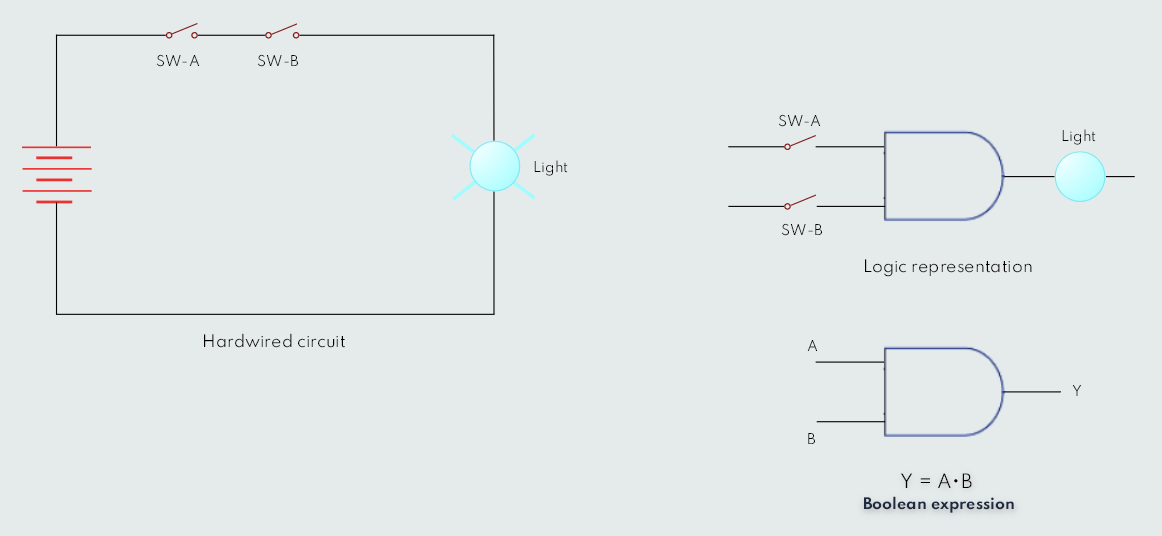
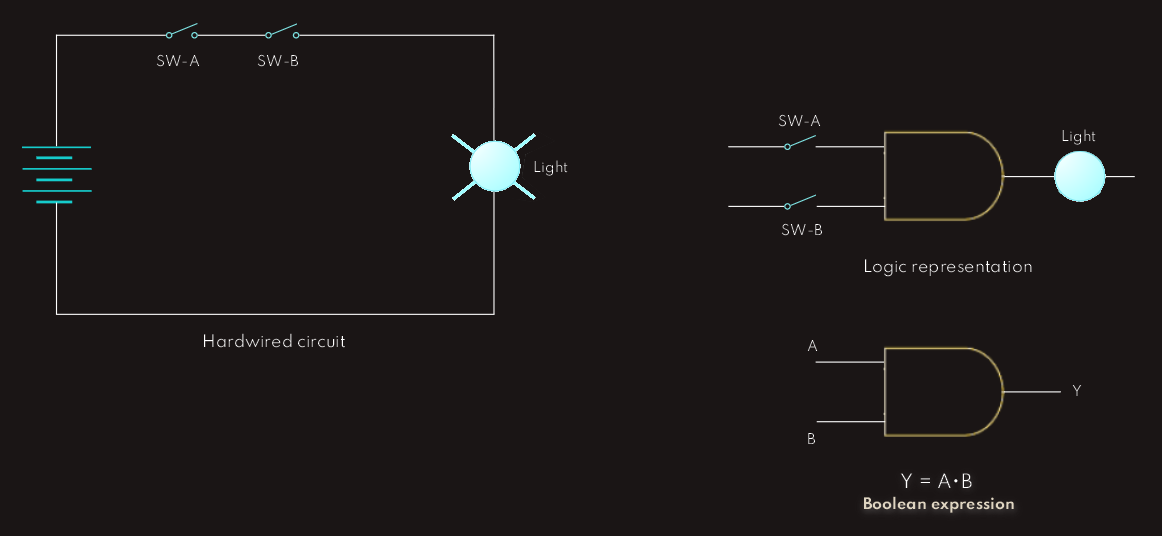
The OR Function
An OR gate can have any number of inputs but only one output. The OR gate output is 1 if one or more inputs are 1, otherwise it is 0. 

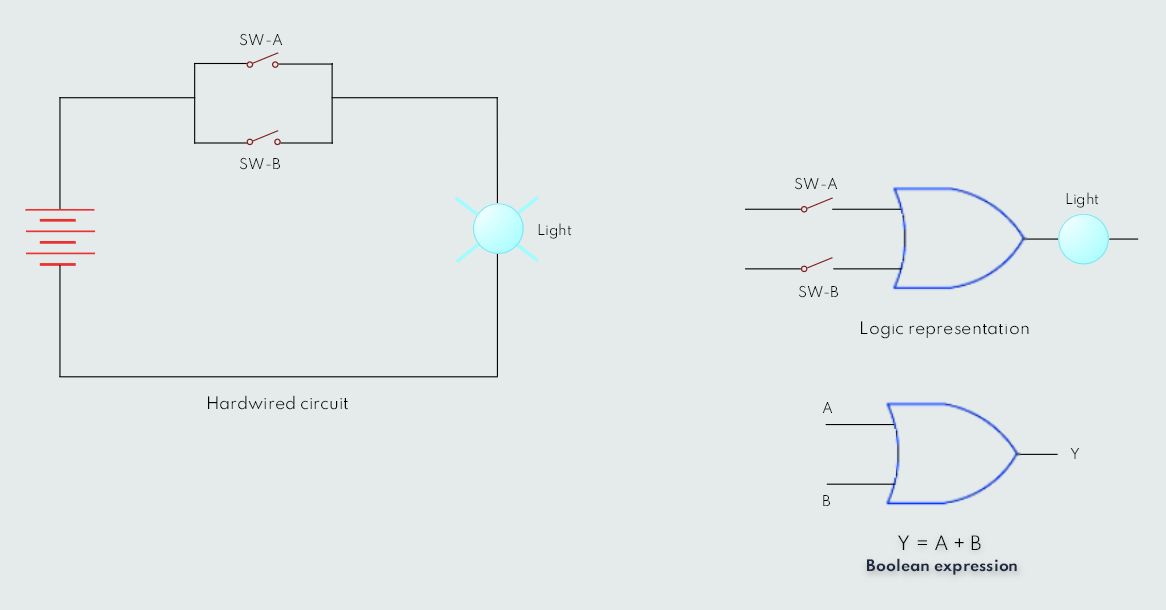
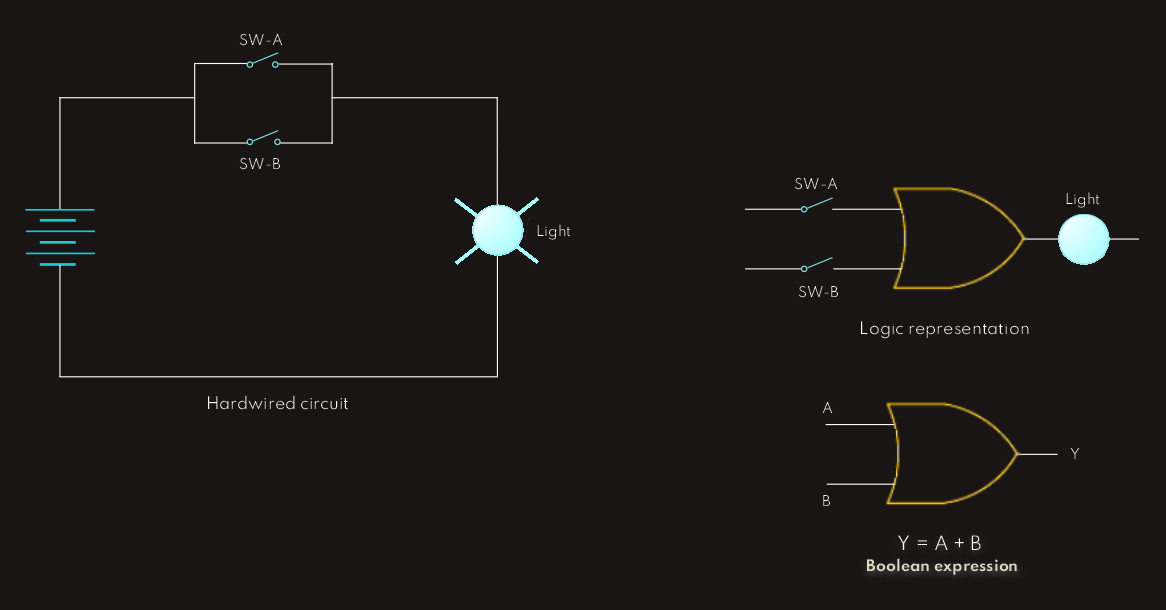
The NOT Function (Inverter)
The NOT function, unlike AND and OR functions, can have only one input. The NOT output is 1 if the input is 0; the output is 0 if the input is 1. The result of the NOT operation is always the inverse of the input, and the NOT function is, therefore, called an inverter. 

Another way for using the logical NOT function is illustrated on the second circuit - when the switch is closed, the current takes the path of least resistance and the light goes OFF, and when the switch is open, then the current through this branch cannot flow, it goes through the light branch and the lightbulb goes ON.
So, here on both examples, we have, let's say inversion method.
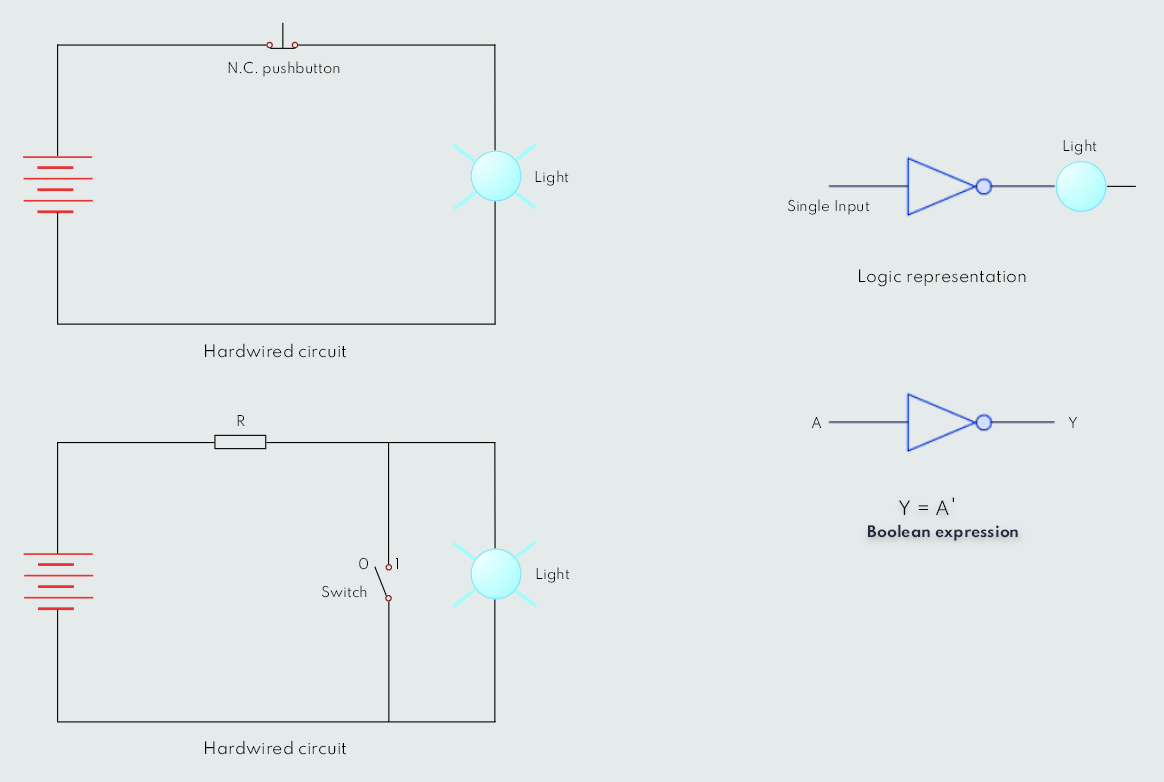
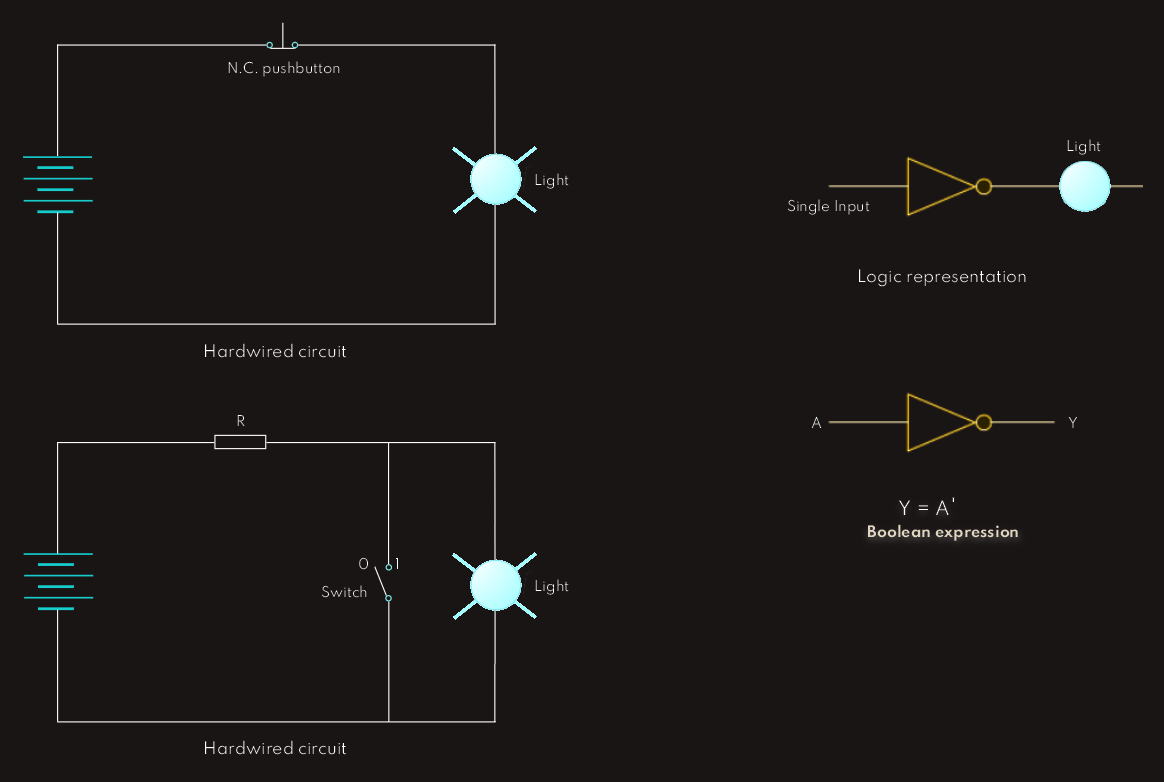
NAND Gates
NAND gate outputs are inverse of those in AND gate, so it can be thought as an inverted AND gate. 








